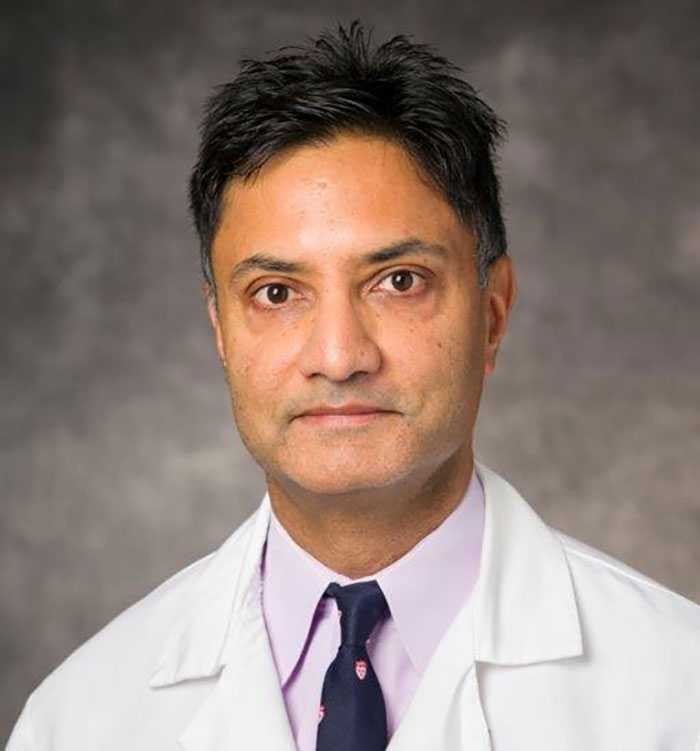UH Lends Expertise to Improve Diagnosis Nationwide
November 02, 2022
UH Clinical Update | November 2022
When is unintentional weight loss something to worry about? What tests should be ordered? What’s the best way to pick up high blood pressure in children and teens – an elusive and massively under-diagnosed problem? What are the best practices for detecting sepsis in its earliest stages? Can our electronic trigger tools be better and save more lives?
 Goutham Rao, MD
Goutham Rao, MDA team from University Hospitals has received a $4 million grant from the federal Agency for Healthcare Research and Quality (AHRQ) to create tools and guidelines for clinicians that help answer these difficult diagnostic questions, establishing the ADVANCE (Advancing Diagnosis through Validated Analytics and Novel Collaborations for Excellence) Center at UH. UH is one of just 10 select healthcare institutions nationwide to receive funding as part of AHRQ’s initiative to improve diagnostic practices in medicine. Other members of the consortium include Johns Hopkins, Boston Children’s Hospital, Brigham and Women’s Hospital, MedStar Health and University of California-San Francisco, among others.
An Unmet Need
An ongoing commitment to improving the timeliness and accuracy of patients’ diagnoses is an essential part of quality healthcare – and part of the culture at UH. But it’s an area that hasn’t received as much attention as others, says UH family physician Goutham Rao, MD, principal investigator on the new grant and Jack Medalle Professor and Chairman, Department of Family Medicine and Community Health at University Hospitals and Case Western Reserve University School of Medicine.
“This is an area where there's a huge gap,” he says. “If somebody comes in with a headache, how do I know it's a migraine versus something more serious versus a regular tension headache? The reality is that the approaches that we've been taught for a hundred years or so are largely based on opinion.”
Data-driven
Here at UH, a multidisciplinary team of clinicians working together in the new ADVANCE Center will incorporate more data and evidence into diagnostic decision-making. Starting with three demonstration projects - unintentional weight loss, pediatric hypertension, and sepsis (in adults and children), they will gather data on current diagnostic practices or practices in response to diagnostic interventions – and what the outcomes associated with these practices currently are.
“We will look at what approaches are associated with better outcomes -- more accurate diagnosis, more timely diagnosis and more cost-efficient diagnosis,” Dr. Rao says. “That’s the ‘big data’ approach to it.”
With this data, Dr. Rao and his colleagues will then work with a panel of more than 25 diagnosticians from across UH, including physicians, nurses and pharmacists. This group will be charged with formulating recommendations that can be implemented to improve diagnostic practice nationwide. At UH these recommendations can be incorporated systematically into meaningful clinical decision support in Epic.
“The next time a patient comes in with unintentional weight loss, consider that something fires in the electronic health record and says here's what we would recommend that you do at this point,” Dr. Rao says. “Our approach to that is very different from what's out there now, which is just a consensus statement of a group of experts on the topic of unintentional weight loss. Recommendations can be all over the place, and there's a lack of science to back it up.”
Power of Collaboration
Disseminating recommendations and measuring their impact is another key part of this new Center. To facilitate that, Dr. Rao will sit on a stakeholder advisory panel at Johns Hopkins, and the leader of the Johns Hopkins Center will collaborate with the group here at UH. Similar “cross-pollination” will occur at the other AHRQ Sites. Ultimately, Dr. Rao says he hopes the clinicians who are part of the AHRQ consortium will look to the process developed at UH to create even more diagnostic guidelines for best practice, for such undifferentiated problems as fatigue and dizziness.
Not “one-size-fits-all”
Dr. Rao says that one sign this new initiative will be successful is the level of “buy-in” the team is soliciting from physicians and other diagnosticians in developing its best practices and guidelines. Physicians don’t want “blanket” guidelines that insult their clinical expertise and don’t take a patient’s extenuating circumstances into account, he says. But there is the need for smarter tools that can enable better decision-making.
“We need more guidance for diagnosis,” Dr. Rao says. “We’ve got plenty of guidance for treatment. I've always said that treatment is the easy part. Once you know what the patient has, you just kind of look at what's available. Of course, it's more complicated than that, but getting to that point is the hard part. That’s where we think our new Center here at UH can really make a difference.”


